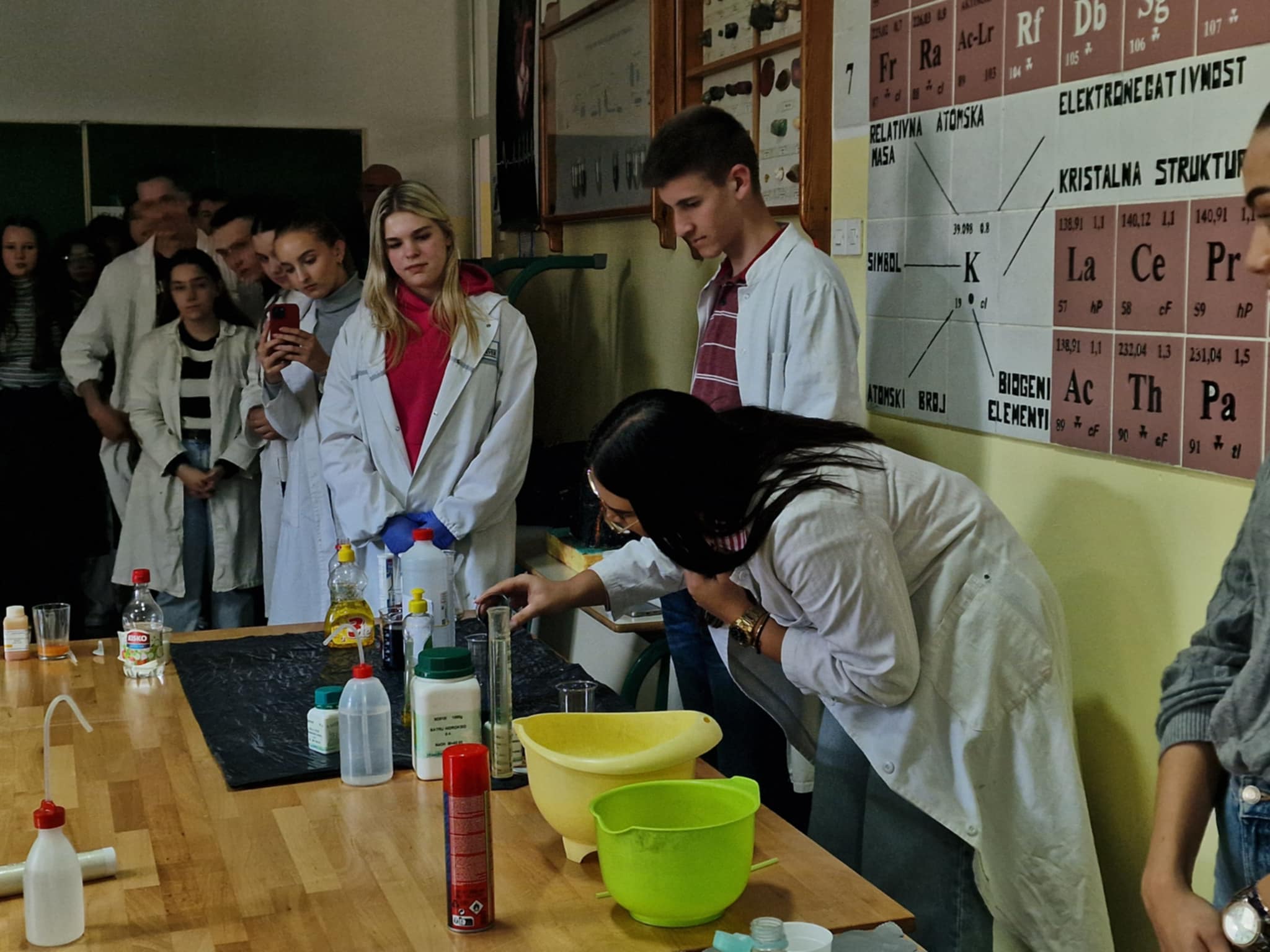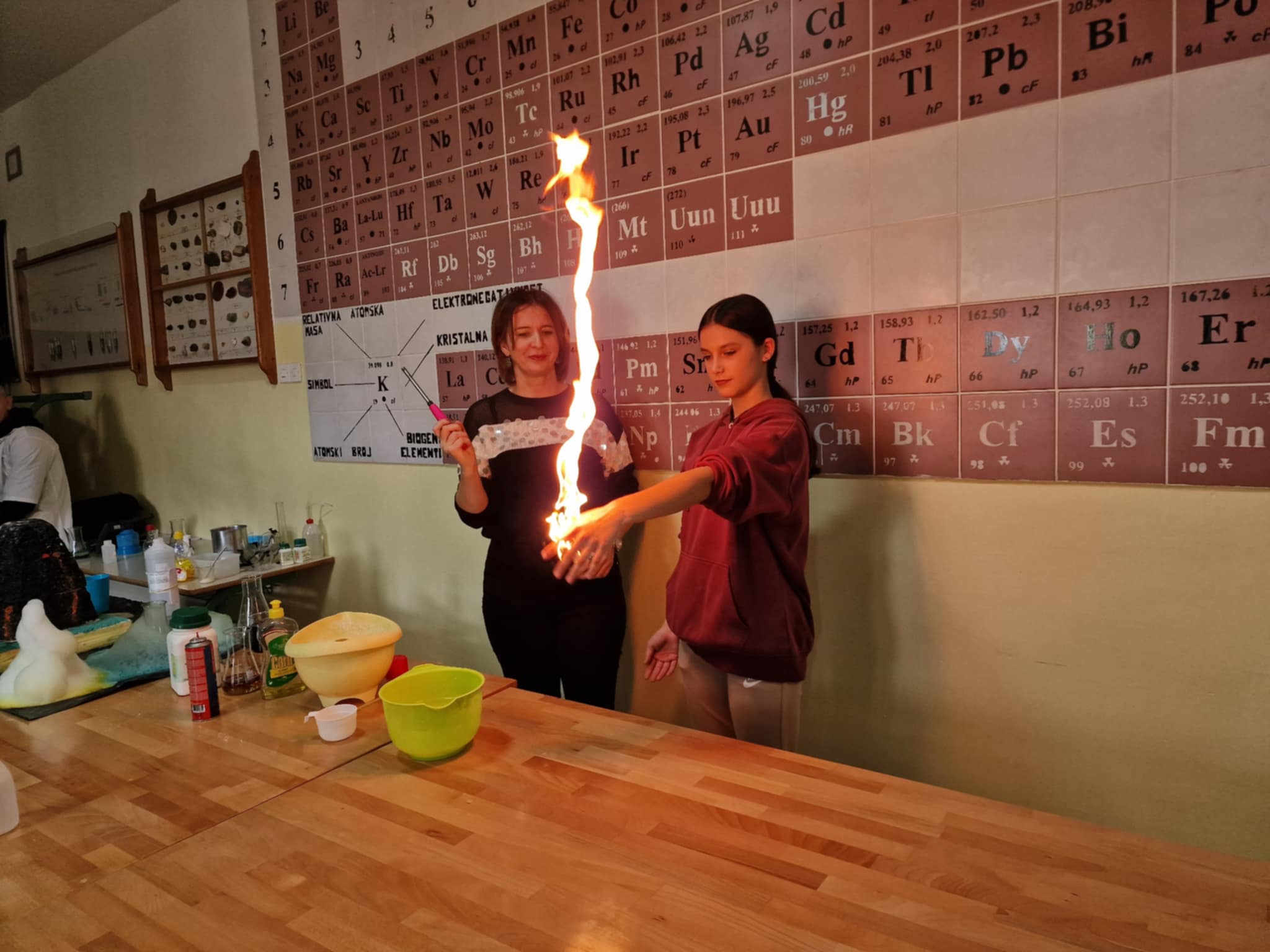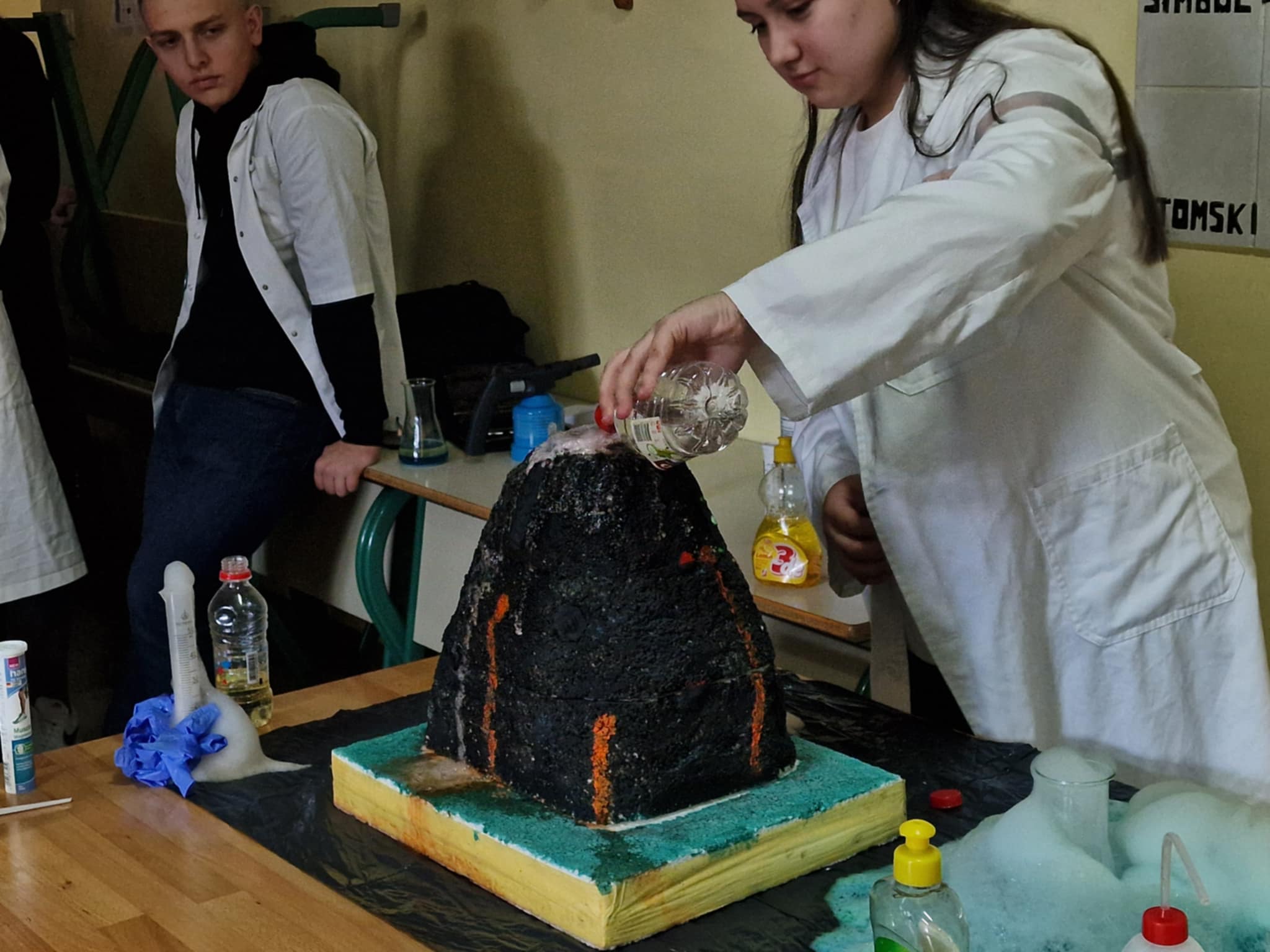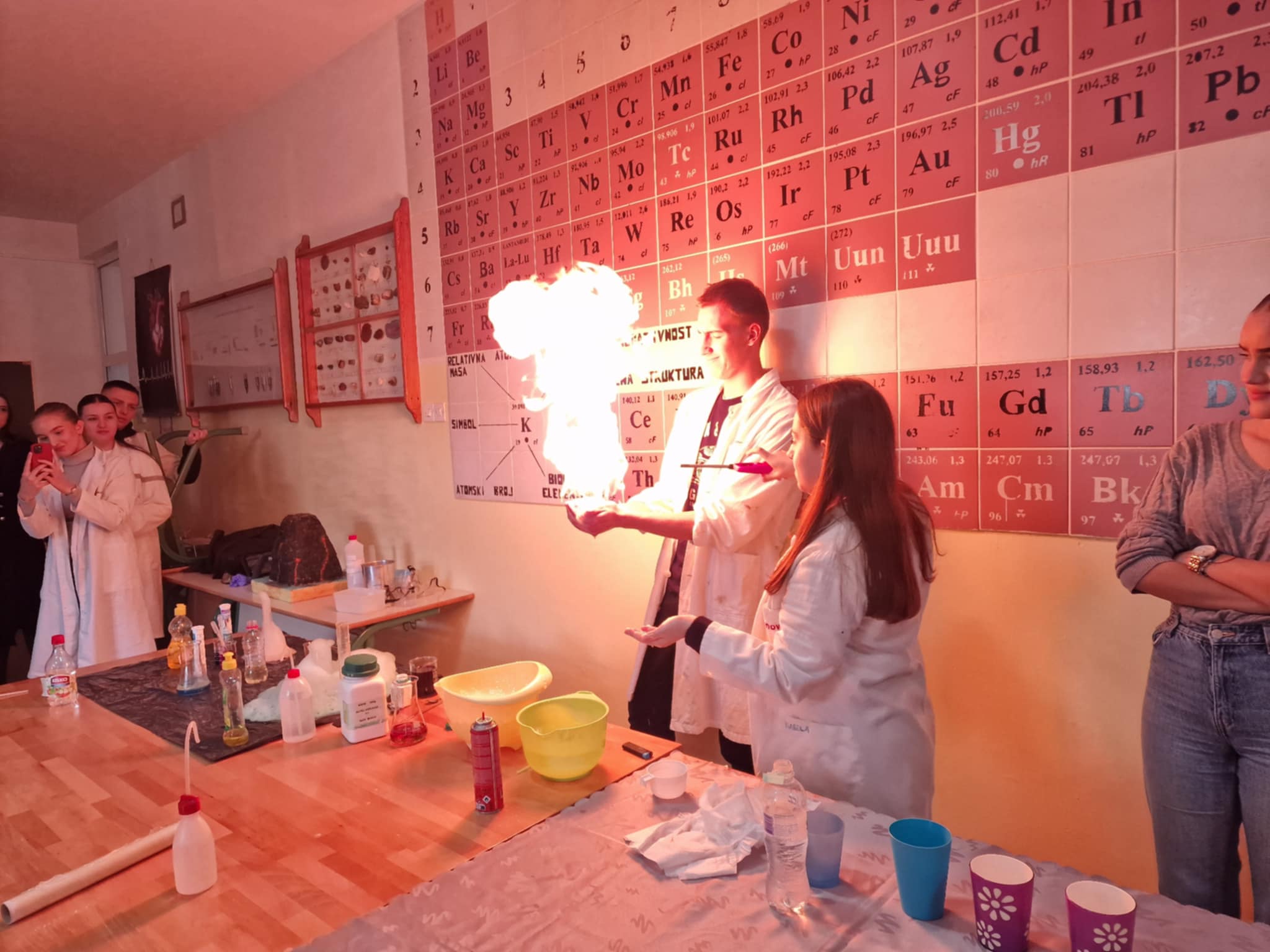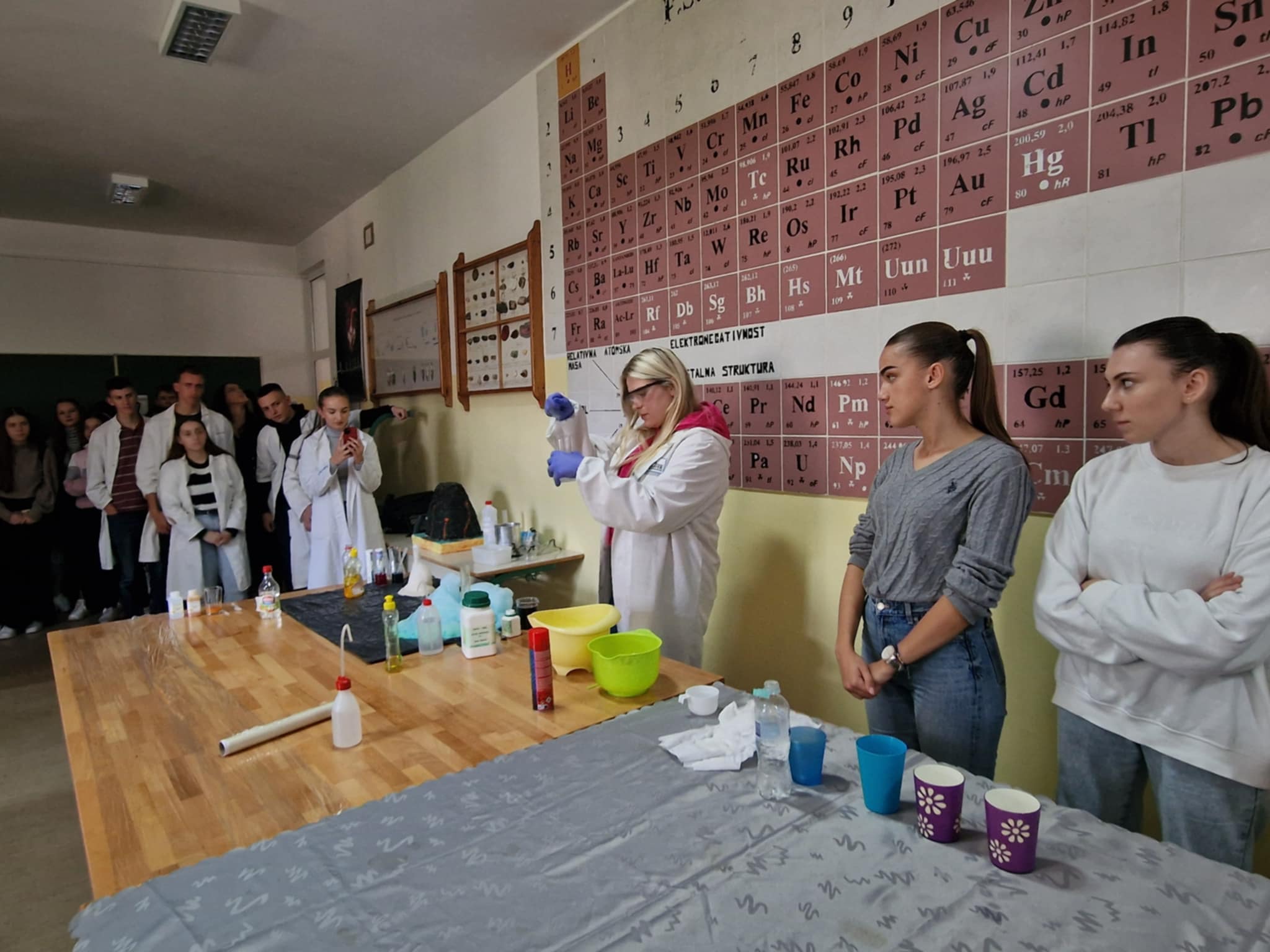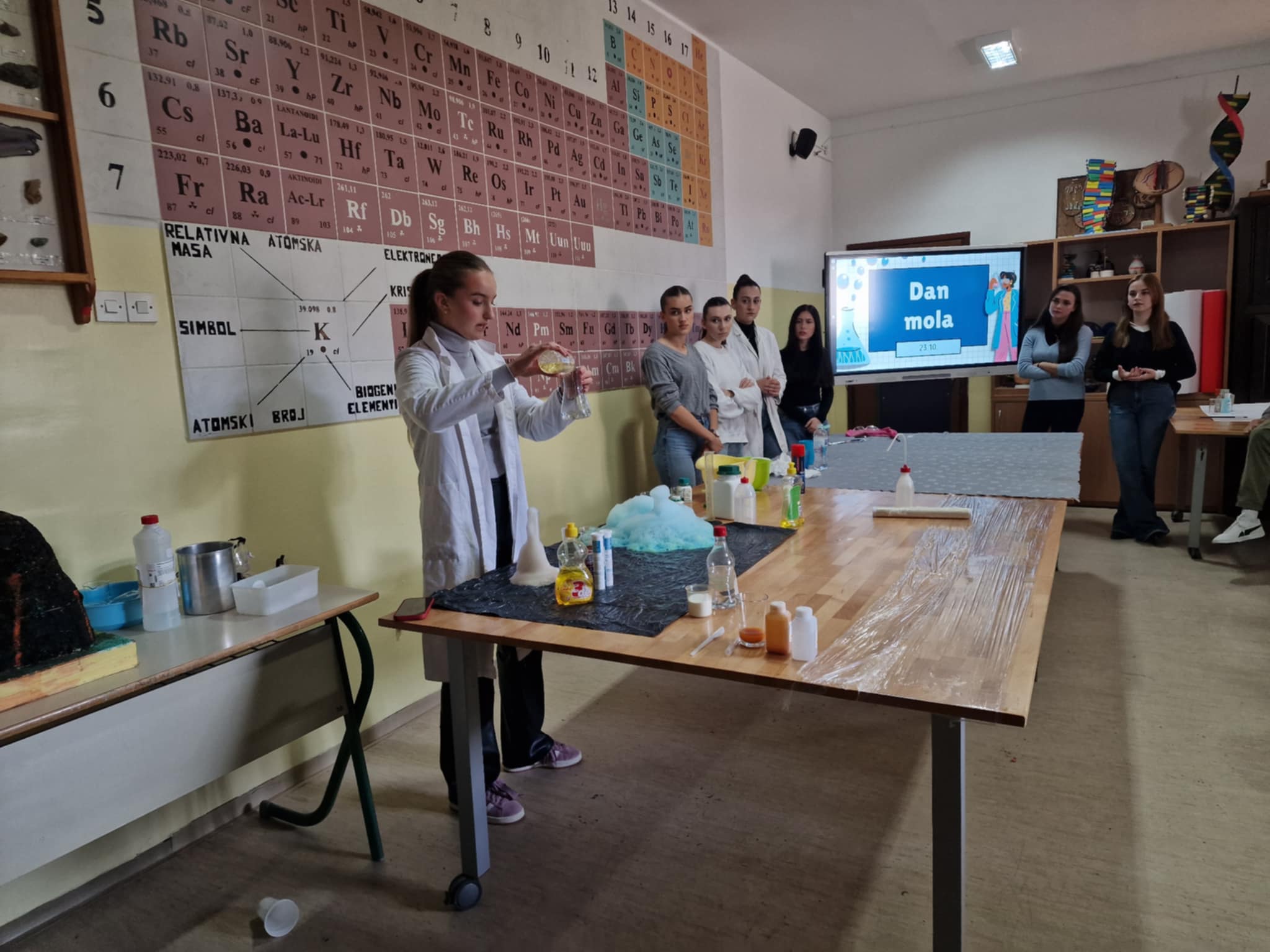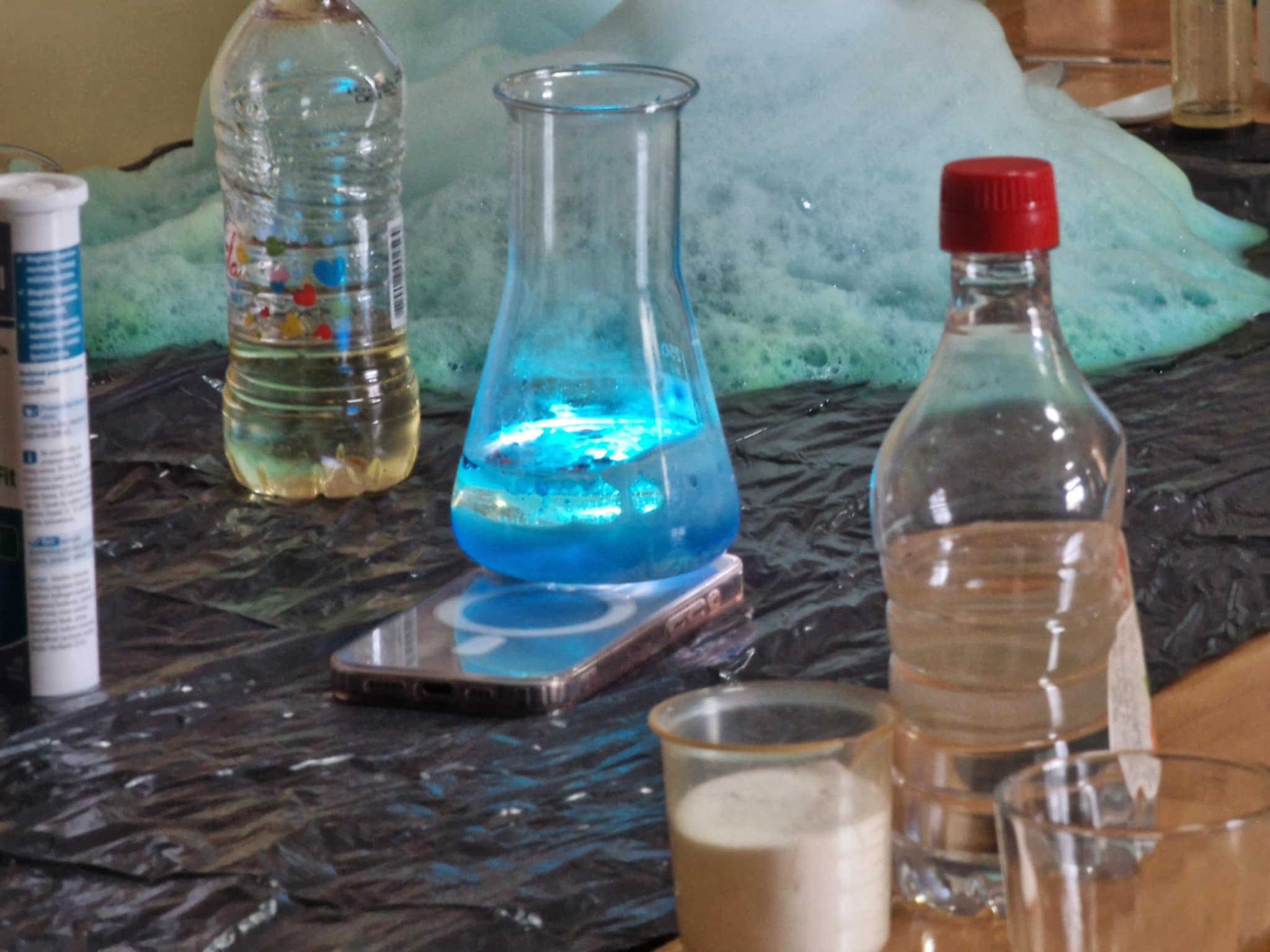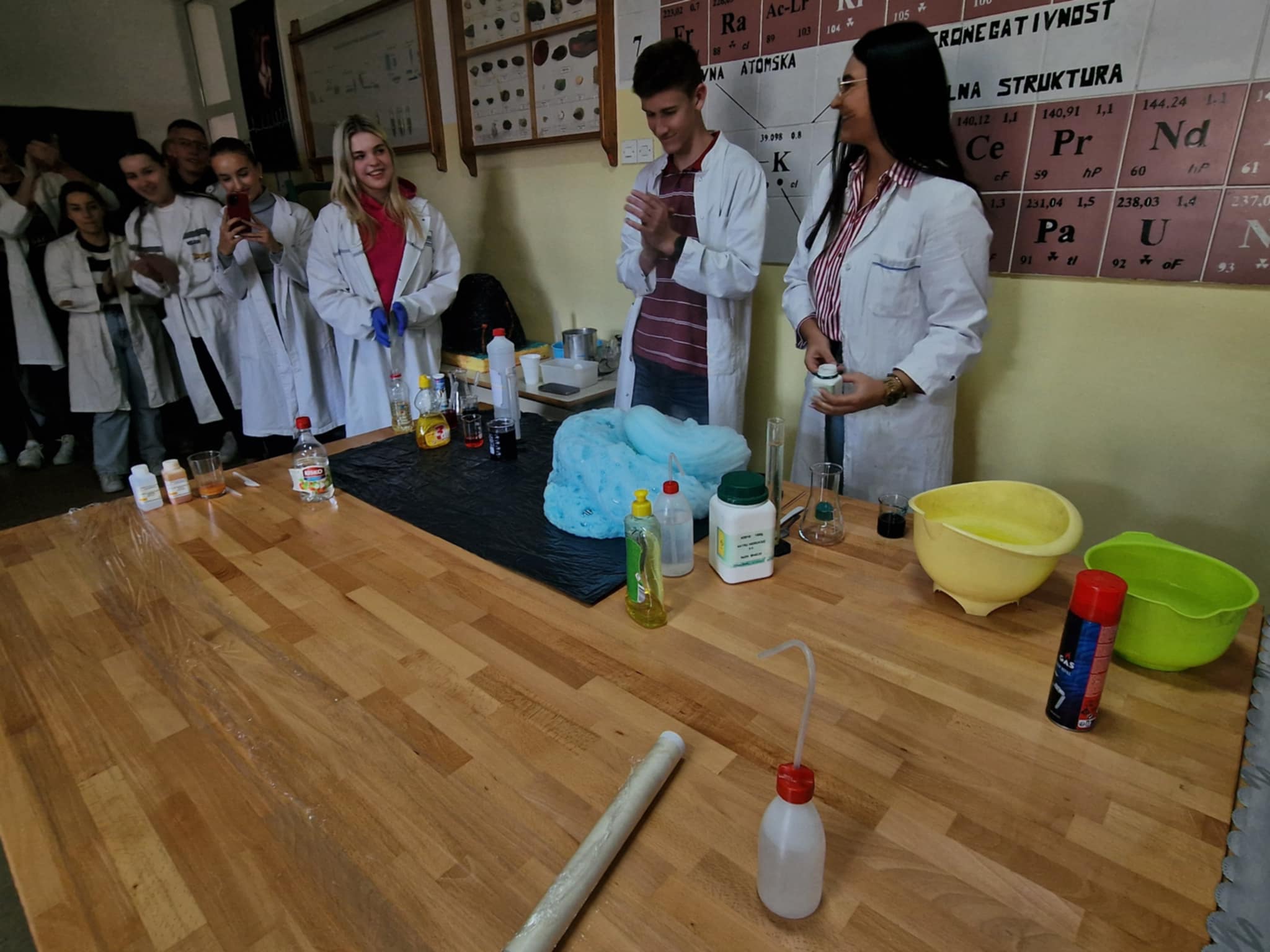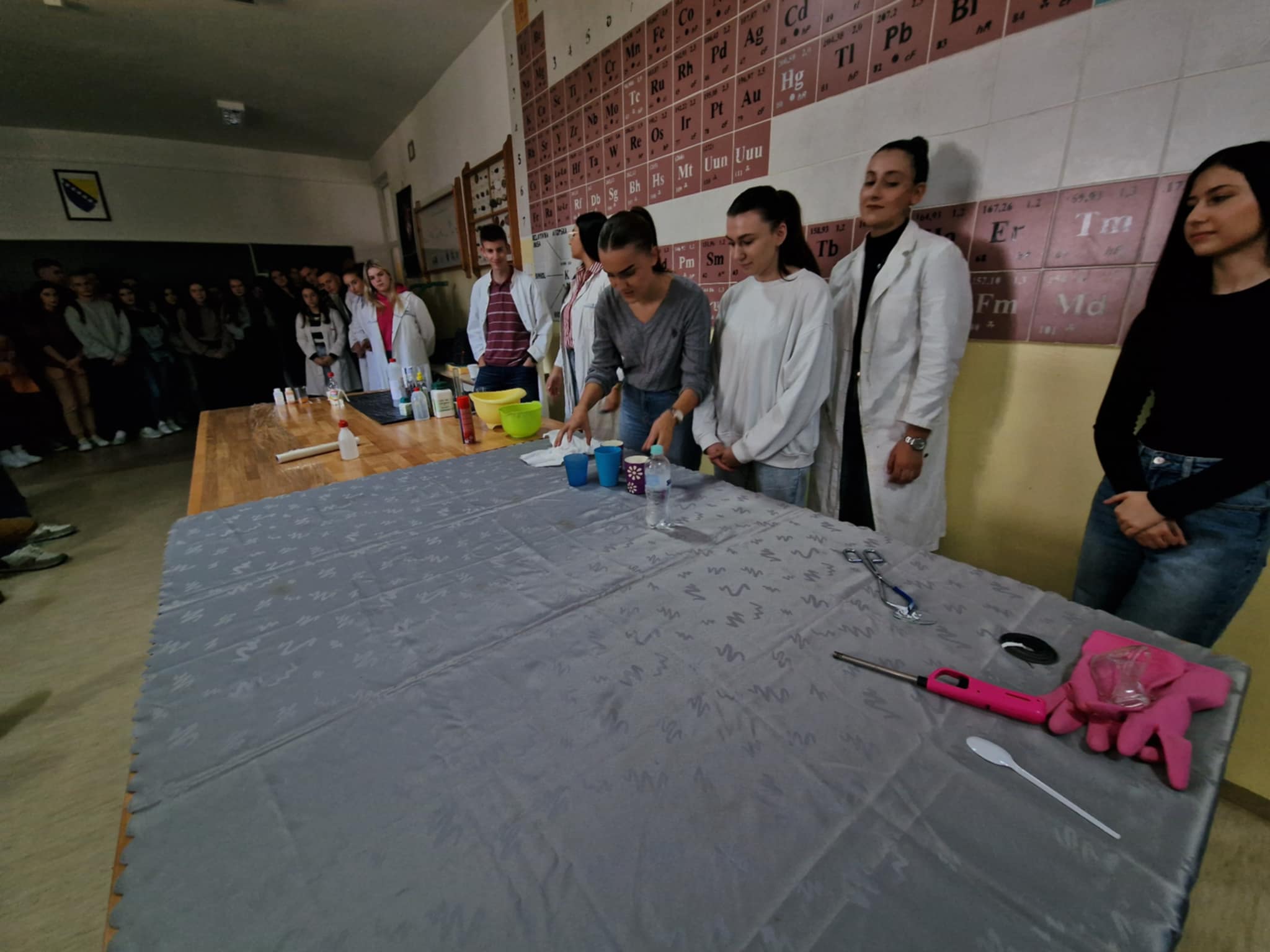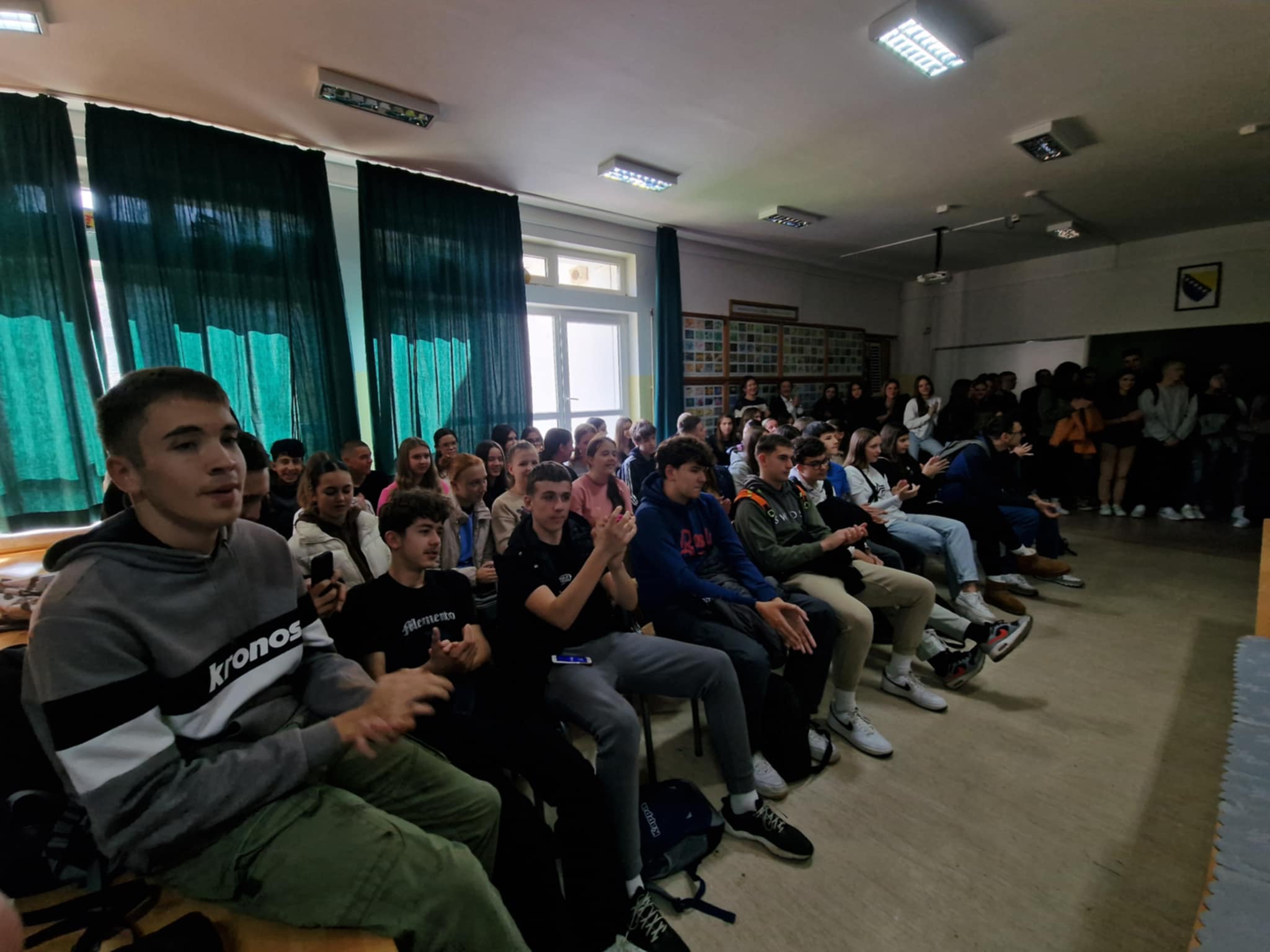Workshop “Celebrating Mole Day”
Description of the good practice
Background
Steps to take if you want to implement the good practice from planning to execution and evaluation if included
1. Planning
- Select experiments suitable for students of various skill levels, including simple reactions and visual demonstrations.
- Provide necessary materials: chemicals, glassware, safety equipment, and instructional guides.
- Organize groups to ensure a mix of students with disabilities and their peers for collaborative work
2. Execution
- Conduct experiments: Students performed 5-6 chemistry experiments, explaining the procedures and results to observers.
- Encourage teamwork: Each group worked together to perform and present their experiment.
- Audience participation: Observing students engaged by asking questions and discussing the experiments.
3. Evaluation
- Collect feedback from participants and observers about their experience and understanding.
- Assess the level of inclusion and collaboration within student groups.
- Review the success of the event in terms of engagement and learning outcomes.

